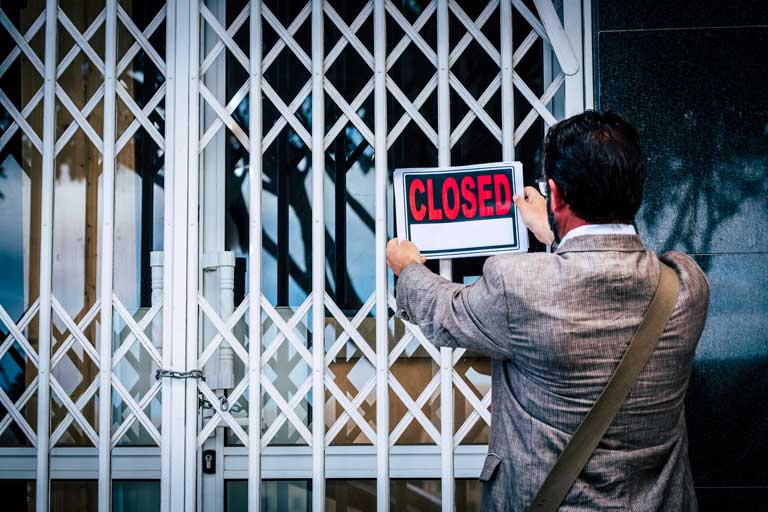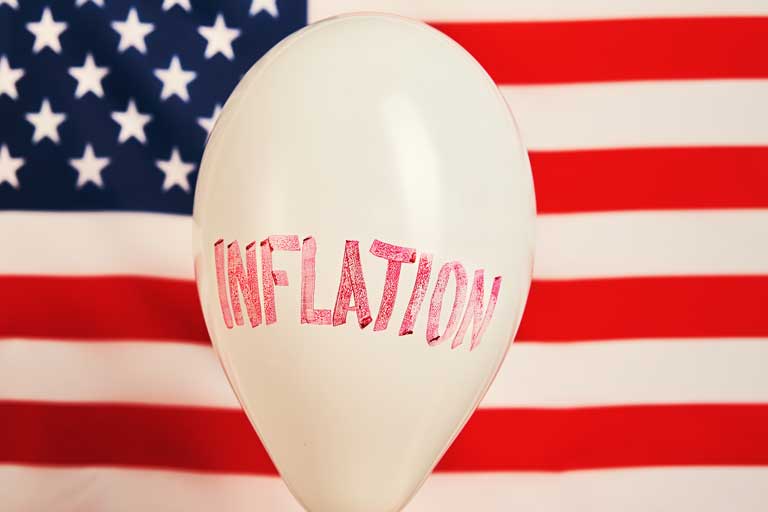With 2024 on the horizon, we can take a look and see how things have settled, or not, over the last few years since the Covid crisis shook the global economic landscape to its core over 3 years ago.
With business closures and struggles, the marketplace was in utter despair. Lost jobs, restricted resources, and the unknown future, left small businesses in a bind, and consumers in a pinch. But, one thing is for sure, what did rise from the ashes of 2020 was prices and the cost of living.
Since then, 2021’s inflation hit the highest we have seen in over a decade at 8%. 2022 was not far behind at 6.5%. 2023 however, has shown a promising turn around, as it is expected to end under 3- 4%. But this is still higher than we should expect in a healthy economy, at 2%. So, the real question is, will 2024 show continued promise with lowered inflation rates, or will the economy still struggle with out of this world prices on essentials.
What is Inflation?
Inflation, simply put, is the increased cost of daily goods and services. As prices increase, the value of the dollar decreases and so does purchasing power.
The best way the federal government measures inflation is through the Consumer Price Index (CPI) and the Personal Consumption Expenditures Price Index (PCE) tools. If the overall consumer spending is represented as a “basket of goods and services” in these indexes increases over time, we know we are amid inflation.
The Central Bank aims to keep inflation at 2%. A small amount of inflation can actually be good for economic growth. The 2% objective keeps prices and employment stable.
However, inflation has a natural way of snowballing on top of itself which can cause dangerous hyperinflation. This ultimately can destroy the long-term performance of the economy.
What Causes Inflation?
Inflation is caused by a variety of factors, and it is a constant cycle in the economic machine, so when inflation hits every few years to every few decades, it should not come as a huge surprise.
Inflation is the result of a healthy and strong economy. The ultimate reason prices go up is due to supply and demand. When there is an increase in demand for goods and services, and a decreased availability of these goods and services, higher prices will result. Supply and demand pressures are generated by both consumers and suppliers.
Demand-pull
Demand-pull occurs when consumers are increasing the rate at which they require the same goods and services. When wages are increased in a healthy economy, consumers become more confident with their income. They spend more on things they typically would have shied away from before. When this happens, the demands can exceed the available supply.
Cost-push
Cost-push occurs when suppliers charge more for products or labor because there is a shortage. Shortages occur from a lack of resources. A lack of resources can be generated by several factors. For example pandemics, natural disasters, monopolies, or lack of labor in general.
Both demand-pull and cost-push typically occur in unison and result in increased prices. Core Inflation is expected in the natural economic cycle over the years, and can certainly be a good thing, However, inflation is in fact, one of the most challenging problems that small-business owners are facing.

How does Inflation Affect the Economy, My Business, and Me?
Inflation and the economy have a simultaneous cause-and-effect relationship. Inflation is caused by a healthy and strong economy, however, once inflation hits, it can, in return, have positive and negative side effects back on the economy. In short, they both affect one another.
Different merchants within the economy will see different effects of inflation. Depending on what industry you are in, you may reap positive results. Other industries may see more negative consequences of inflation. This is all dependent on what point in the economic cycle we are in during the inflation up-trend.
Inflation can be positive for the economy. When small in increments, healthy wage increases encourage healthy spending behaviors, which further results in boosting a healthy economy. If inflation gets too high, above the 2% target, the Central Bank will work to regain control of the economy. When this happens, small businesses may feel the impact the most during these efforts.
Let’s take a further look to see what happens during inflation, as we compare the simultaneous positives and negatives that affect consumers, merchants, and the economy as a whole.
Spending Increases
With rising prices, consumers will expect inflation to continue. Because of this, they will be motivated to purchase more now, in hopes of avoiding future price hikes. With an increase in spending, merchants’ profits increase, income is further boosted, and healthy economic growth is generated.
For the common consumer, moving forward on big purchasing decisions looks like investing in new automobiles, electronics, appliances, real estate, and other standard daily goods before they become too expensive. If inflation is expected to rise further, these items would then soon be unobtainable.
As inflation rises, money begins to lose its value. Therefore, a more daring consumer may decide they want to attempt a better return on investment by moving money around into higher-interest savings accounts, purchasing stocks, or other investment opportunities.
Moving money into different investment opportunities, however, is risky. If a consumer lacks knowledge in the field he or she is putting their money in, they may end up with a bad investment. This would in return lose money due to mismanagement of their funds.
Money’s Value Decreases
As mentioned previously, the economy is a cycle. There are always ups and downs, inflation and deflation. However, the cycle’s starting point each time is a little higher than the previous one. This is because people will borrow more when interest rates are low, rather than paying off their initial debt, it’s human nature.
Because the cycle is always creeping higher even after points of deflation, the long-term inflation remains constant. So over time, if you were to have $50 saved 40 years ago, over time, with the impact of higher inflation rates, the value of what $50 could buy 40 years ago is now cut in half.
The purchasing power has significantly decreased. Imagine being on a fixed income. If you made the same amount of money today as you did 10 years ago with no raise, you would not be able to afford rent, let alone purchase daily essentials.
Rather than leaving money in low-interest savings accounts or at home, stored under the mattress, rendering money worthless, consumers and businesses alike should look for investment opportunities that will offer higher returns after inflation hits.
Acquiring the right assets and investment opportunities will freeze or increase the value of their money over time. This could look like investing in stocks, bonds, real estate, or high-yield savings accounts or CDs.

Cost of Living Dramatic Increase For 2023
As money’s value decreases, the cost of the same goods and services goes up. Even though inflation points to a healthy economy, consumers will face inflated prices on their daily necessities, investments, and luxury items alike. However, if income also rises with a booming business, this may not be a cause for concern. In other words, as prices rise, and money’s value decreases, the cost of living will increase if income does not match inflation’s rate of acceleration.
Because of this, inflation is today’s biggest threat to small businesses. The pressure employers face to increase wage compensation to mirror the increase in the cost of living could impair a business’s success. With purchasing powers limited by dramatic inflation rates, many businesses are unable to afford increased wages.
In fact, Forbes claims that due to inflation, 39% of small businesses had to take out additional loans to fund their supplies, mortgage or rent, and/or staff wages. Moreover, 41% had to actually cut staffing to keep up financially. In these cases, many businesses will face increased unemployment and job openings left unfilled.
In return, this reduces the rate of production and thus decreases profit margins. For employers who can compete with wage increases, their employment opportunities will flourish as workers look for higher-paying jobs.
Short-term Growth and Employment Opportunities
At the first sight of inflation, consumers and businesses are keen to spend savings and look into investment opportunities. Because over time, with inflation, their purchasing power will decrease and they will be able to buy less with their money if they wait.
With high demands and spending increased, employment and business growth have a direct correlation to inflation. Unemployment will decline at first to meet the need for demand and business growth opportunities. As more people are spending, businesses’ income is growing.
However, if inflation continues, and goes beyond the Federal Reserve’s target of 2%, the Fed rate will be increased to compensate. When this happens, an uncomfortable downturn in the economy will result.
Credit will be less accessible, growth will slow, employment opportunities will decrease, and deflation will begin to result.

Stock Market Movement
Stocks are assets that are purchased, which give shareholders a portion of a company’s profits. Because healthy inflation yields higher spending, stocks can go up in price and become more valuable if companies are seen as profitable. However, if inflation continues to rise above healthy levels, the stock market becomes volatile.
Value stocks and growth stocks will perform differently during economic turnover. With growth stocks, you are investing in a company that is expected to outperform over time. When inflation is low, growth stocks do better because they are more affordable.
Value stocks are shares in companies that are trading lower than they are possibly worth, so in return, the shareholder gets a higher return on investment. During times of high inflation, these types of stocks typically do better.
Interest Rates Increase
The Central Bank manages inflation through indicators from the Consumer Price Index (CPI) and the Producer Price Index (PPI). These tools have indicated that the rate of inflation in 2022 had reached the fastest the US has seen in over 40 years, at 8.6%. Because the Central Bank wants to keep inflation at 2%, this rate of increase is cause for red warning flags to go up.
To rectify hardships from inflation, the Central Bank must step in. To balance the economy, the Central Bank should increase the fed rate. Increasing the fed rate increases the interest rate and decreases the availability of easily obtainable credit.
Last year’s fed rate increases were the first since 2018. In 2022, the interest rate had been raised 3 times, totaling over 1.5%. Increases are predicted to continue. June’s 75-point increase was the highest raise since November of 1994.
After raising interest rates 7 times in 2022, the Federal Reserve increased their rates another 4 times in 2023. However, at its most recent meeting in September, the Federal Reserve chose not to raise rates again. The fed funds rate is set between 5.25% and 5.50% as of September 2023.
Many merchants rely on the availability to take out both business and personal loans. According to a survey from The Harris Poll, 39% of new business owners rely on credit to fund their endeavors.
As interest rates rise, the ability to borrow becomes minimized. The money supply is constrained. Businesses are facing heightened adversity with increased pricing, drained funds, and more expensive loans.
To add to the elevated pressures, banks also become more selective with their approval rates to protect themselves. This makes it increasingly more difficult for borrowers to obtain additional funds.
As inflation increases the cost of assets including real estate goes up. When the Central Bank additionally increases interest rates to attempt to balance the economy, in hopes of deflating costs, this makes it even more difficult for potential buyers to obtain property.
Today’s increased real-estate prices and increased mortgage loan interest rates have put owning real estate out of reach for many. The new average 30-year fixed rate mortgage is near 6%. This has doubled since last year.
Assets and Real Estate Soar
Historically, real estate investors, homeowners, and business owners that have purchased their brick-and-mortar locations prior to rising property values can benefit from automatic equity gains. Real estate investments have historically proven to be a great way to hedge inflation.
Although money typically loses its value during inflation, this is not the case when it comes to paying back a fixed-rate mortgage loan. Borrowers who are already locked in with a fixed-rate mortgage benefit the most from rising inflation. The loan’s interest rate will not be affected by the rising prices of real estate, nor the federal reserve’s interest rate influx to combat inflation.
The money used to pay back the fixed loan does not lose its value. The same amount of money will still be paid over the years and reaping the same benefit. Basically, the money that is paying back a loan during inflation is worth less than the money that was borrowed before the inflation. The amount is the same, and the asset is the same, but the value is not the same, and this only negatively affects the mortgage broker.
However, new borrowers or borrowers with an adjustable-rate mortgage loan do not reap the same benefits. During times of inflation, lenders raise their interest rates to keep up with Fed rate hikes and inflation.
If you are an investor, or in the housing or development industry, you are also able to charge more for rent and mortgage during inflation. However, keep in mind that if you are in an industry where you do not own your property, increased rent will then hit you negatively.

Inequality Rears its Ugly Head
Inflation will hinder low-income households the hardest. When inflation hits, inequality emerges more vividly. Inflation drives prices up for daily necessities and high-return investments like real estate, stocks, bonds, and other assets alike.
When prices are driven up on daily goods and services, households who are low-income will be spending a higher percentage of their earnings on daily necessities than those who are on higher-end incomes. When the majority portion of a household’s income is spent on purchasing daily necessities, they have just enough to get by. There is not enough left over for savings or to make investments in assets.
In contrast, high-income households, though still paying higher prices for their daily goods and services, do not see as much of a dent in their overall spending compared to the less fortunate. Established upper-class families have and are able to purchase or maintain stocks, bonds, real estate, gold, and other assets.
When inflation increases the value of these assets, these households actually gain more wealth and buying power in the assets they own. This leaves them with a better benefit from inflation than the lower class.

Inflation May be Better than Deflation
Deflation is the downturned result of gaining control over inflationary highs in the economy. Although inflation may seem like a bad thing, as money loses its spending power, deflation may be even more dangerous.
Deflation is a period when prices drop. Although price drops seem like a beneficial turn of events, it can make it difficult for businesses to yield a profit. When businesses are seen as less profitable, stocks slow, investments slow, and growth slows.
As discussed previously, when inflation begins, it allows lenders to offset devalued payments by increasing interest. Although interest is peaked, fixed-rate borrowers can pay off debt at a value that is worth less than what it was when acquired.
In contrast, deflation can erode economic advancement. Demand for goods and services deplete, and businesses are forced to cut employee incomes, or the less favorable alternative, initiate lay-offs. With a decline in income, debt becomes increasingly harder to pay off.
Over time, as deflation continues, many people will default on loans and a banking crisis can transpire, disabling the economy as a whole.
Impact of Inflation 2023 Conclusion
During the early stages of inflation, businesses are booming, and wages may go up, reflecting the thriving economy. However long-winded inflation may have the opposite effect.
Demand becomes too much, interest rates are spiked, employers cannot keep up, and wages may eventually decline. Decreasing too far, too fast generates a critical cycle point and is known as a recession. Over the 2023 year, we have seen prices decrease a smidge and the fed rate has finally ceased. So, the United States may be facing a recession on the horizon.
To contact sales, click HERE. And to learn more about ECS Small Business Solutions visit Small Business.
